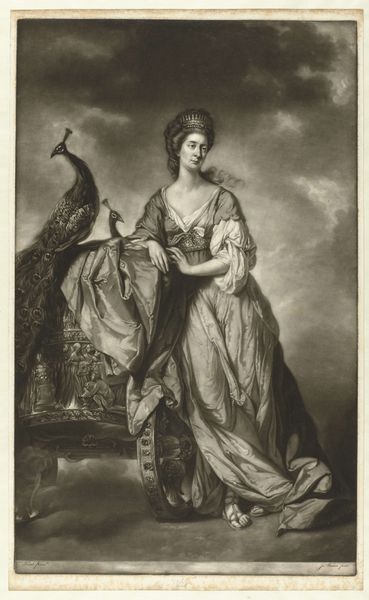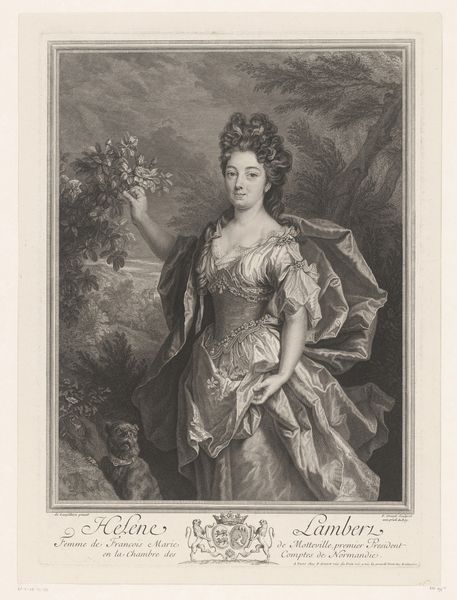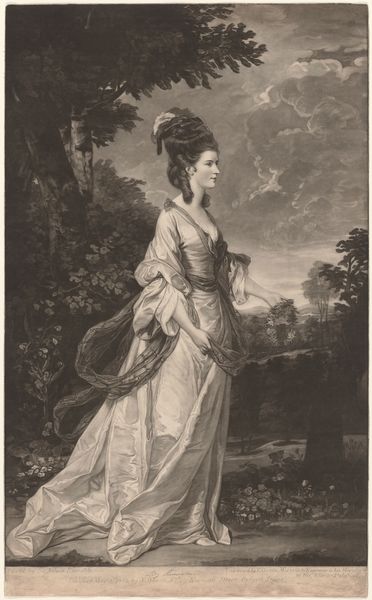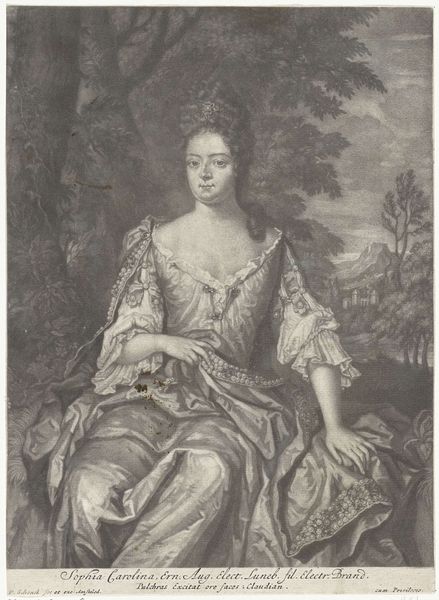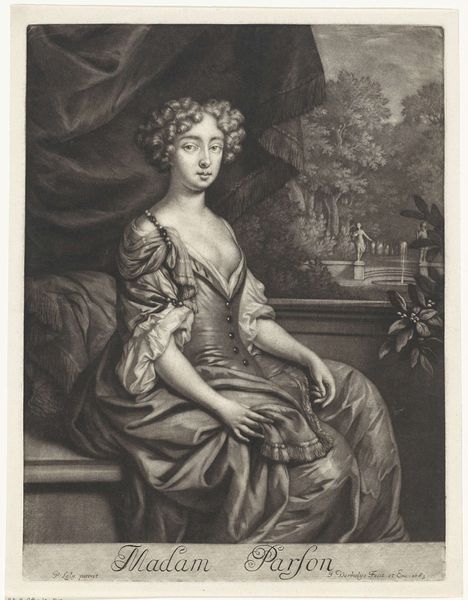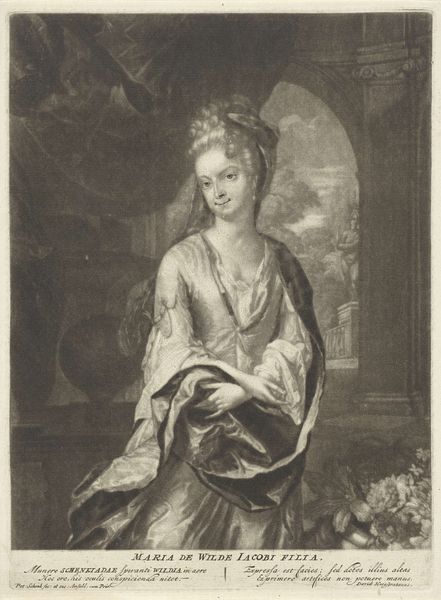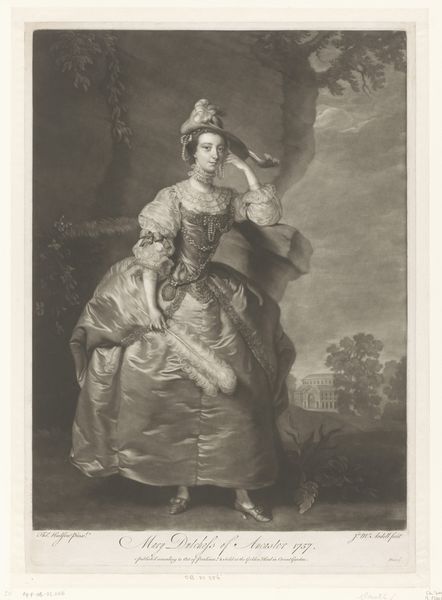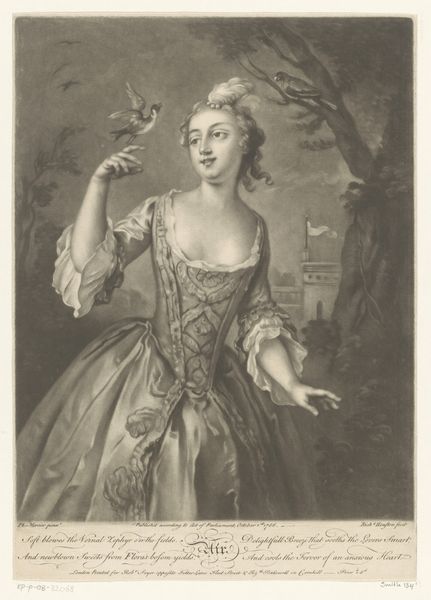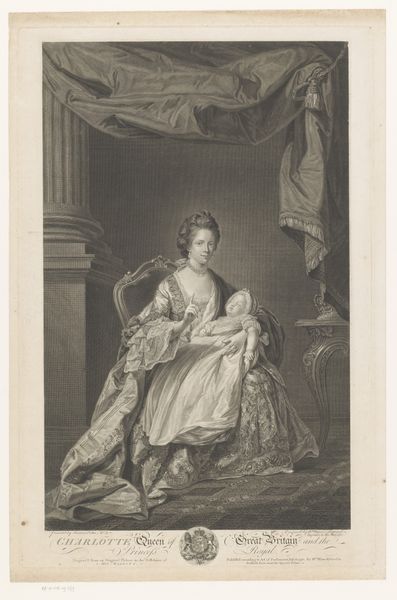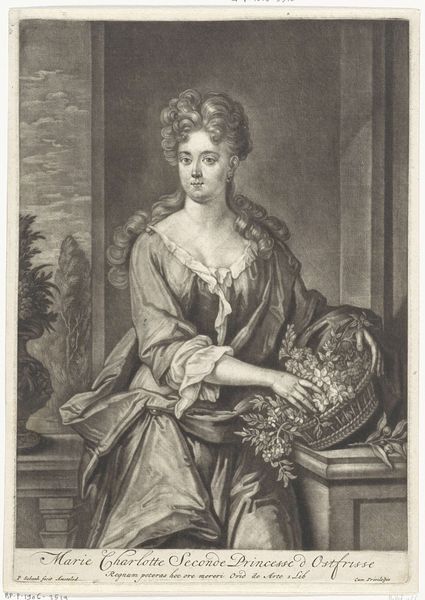
Dimensions: height 626 mm, width 383 mm
Copyright: Rijks Museum: Open Domain
Editor: This is "Portrait of Mary Boynton," a charcoal and pencil drawing from around 1770, currently housed in the Rijksmuseum. There's something so striking about how a seemingly simple medium like charcoal can capture such detail and texture in her gown. What stands out to you about this piece? Curator: What I find fascinating is the confluence of the individual portrait with its public function during the 18th century. These images were not simply representations of individuals but functioned as signifiers of social standing, lineage, and often political alliances. How do you read the staging here? Does the garden setting strike you as naturalistic, or more performative? Editor: It feels performative, definitely. Like a stage set, not a candid shot. Is that common for portraits of this era? Curator: Absolutely. The “natural” backdrop was carefully constructed to convey a sense of cultivated leisure and wealth. Notice, too, the sitter’s direct gaze and the positioning of her hand – subtle indicators of her agency within a patriarchal society. To what extent do you believe that female portraiture during this era served as propaganda for particular societal ideals? Editor: That's an interesting thought! I suppose these portraits were tools, weren’t they? Promoting an ideal of womanhood – wealth, beauty, perhaps even docility – for public consumption. So it’s not just about likeness, it’s about constructing a public persona. Curator: Precisely! And in doing so, shaping social expectations. How powerful that these images shaped cultural discourse, both celebrating and restricting female roles. Understanding these nuances helps us unpack the complex relationships between art, power, and social identity. Editor: I’ve definitely gained a new perspective on how portraits can function as more than just depictions of a person; they're reflections of the power dynamics of the time. Curator: And by analyzing them critically, we can better understand the society that produced them, revealing the politics of image making in earlier times.
Comments
No comments
Be the first to comment and join the conversation on the ultimate creative platform.
